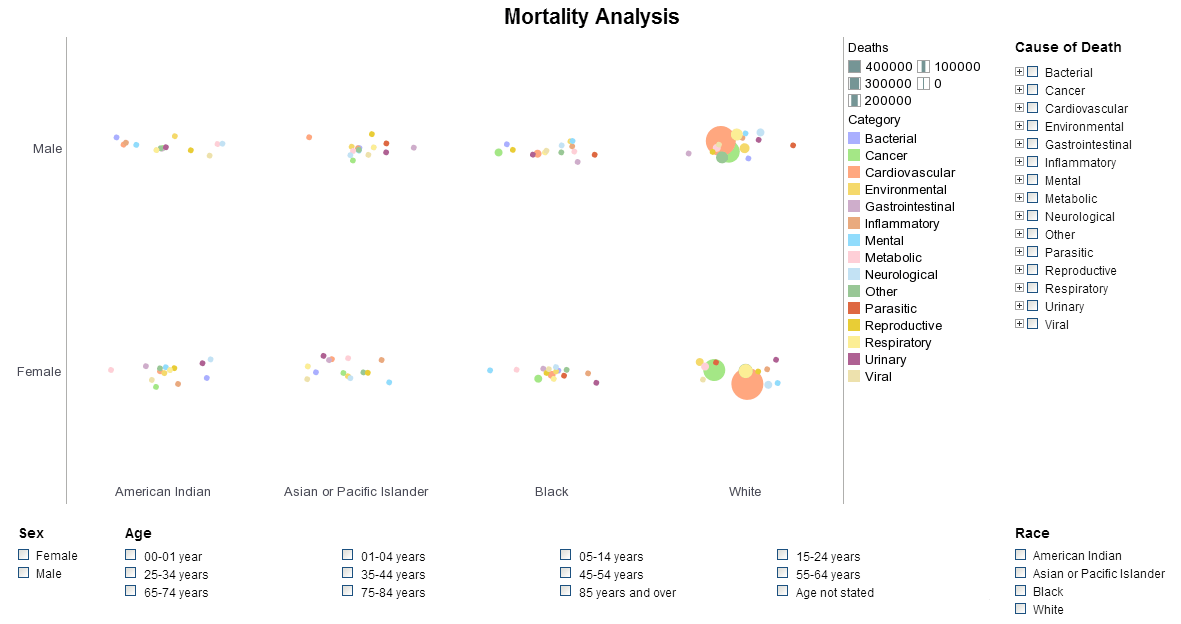InetSoft CEO Explains the Innovative Use of HTML5 in Its Visualization Software
A continuation of The Business Intelligence Network's exclusive interview with InetSoft’s Luke Liang
Ron Powell (Editorial Director of the Business Intelligence Network): Now you mentioned the use of HTML5. Is that something relatively new to your business intelligence product?
Luke Liang (CEO, InetSoft Technology): Yes. The HTML5 technology we began to use a couple of years ago in our ad hoc reporting tools on the enterprise reporting side, and we found that to be very flexible, and that is enables the delivery of desktop quality business intelligence applications. So we expanded the use of this interface. You can see how flexible it is. The analytic application looks like a spreadsheet. You can do a lot of the same things you can do on a spreadsheet, but it’s a Web application. It’s really amazing.
Powell: Do executives like the HTML5 interface, or is it for more technical users?
Liang: The technical users, they typically say “wow, you can do this!” The business end users typically see straight through to the benefit of using such an interface which is so sophisticated and allows them to do these things they can do on the desktop. And this observation is really the more important one. The “wow” factor doesn’t really express a business need, but when you need to get work done, the business executive says, “wow, you can really get the answer to this question I have, by making simple formulas, by dragging things around and arranging the data in any way that I want."
So far the reaction we see is all very positive.
Powell: Going forward, is there any new areas of product development that you are focusing on, or do you see some changes coming down the road that will appeal to all sets of users?
Yes, we are developing our business intelligence products in the same way as we have planned it before, based on these three principles that we have talked about.
So the first area we have been more recently researching is how to link the data mashup engine we have already built, which performs wonderfully, and expand that use. It’s a very interesting scenario because we have found many people use this product in a way where they say, “Look, data mashup offers two modes of use. First, it allows us to mash up data for immediate use in an ad hoc report or a dashboard, and the second type of use is use the data mashup as a precursor to a data warehouse process.”
They are able to see what kind of information they really need before they start inserting new data into a data warehouse. So we are expanding in that direction and are looking to come out with new business intelligence technologies to help them to use this mashup engine with their data warehouse process, or ODS, so they can point to a certain portion of the mashup and say, “ok, here this portion makes sense to transform into the data warehouse, or ODS.”
Then our database access software can help them to perform that function.
Powell: You know, some of our audience may not be familiar with the term mashup. It’s a Web 2.0 term?
Liang: Yes, we have been called the first company to try this concept in the business intelligence market, or in the data management field, which was a little surprising to learn. That was recently at a business intelligence conference we participated in.
To define mashup is not very hard. Mashup typically means you are combining a couple of things together that were not really designed to be used together. One of the most famous examples is the mashup of the Google map with something else. Somebody plotted city crime rates on a Google map. Those two things, before had no connection at all, but someone just put it together.
So our mashup is pretty much the same concept here.
Powell: OK, so you are taking multiple data sources and combining them in such a way that they deliver a new context based on both or multiple sets of data?
Liang: Exactly.
Powell: OK, very good. Very good.
Liang: That’s actually what a lot of business people have been doing in spreadsheets on their own. You keep hearing about the spread mart, and how the spreadsheet can never go away. A lot of what we have learned happening is people are doing mashups, basically, inside the spreadsheet.
Powell: Right. Exactly. I know it well. That is one of the biggest problem areas for most of our viewers at the Business Intelligence Network. Think about the “spreadsheet hell,” that’s the term they use. It has been very difficult, but a lot of the new BI products like yours that are coming to market are helping to alleviate some of the problems that are associated with that.
Liang: One more area that we are paying attention that might be of interest to your audience has to do with collaboration. Recently Web 2.0 has brought a lot of new collaboration tools and practices into popularity, such as wikis and blogs, which have increasingly been used in the enterprise. Previously had been a consumer kind of phenomenon. We have heard our customers say, “you know what? A lot of this collaboration is going on, and we want to be able to mash up BI in this field also.



